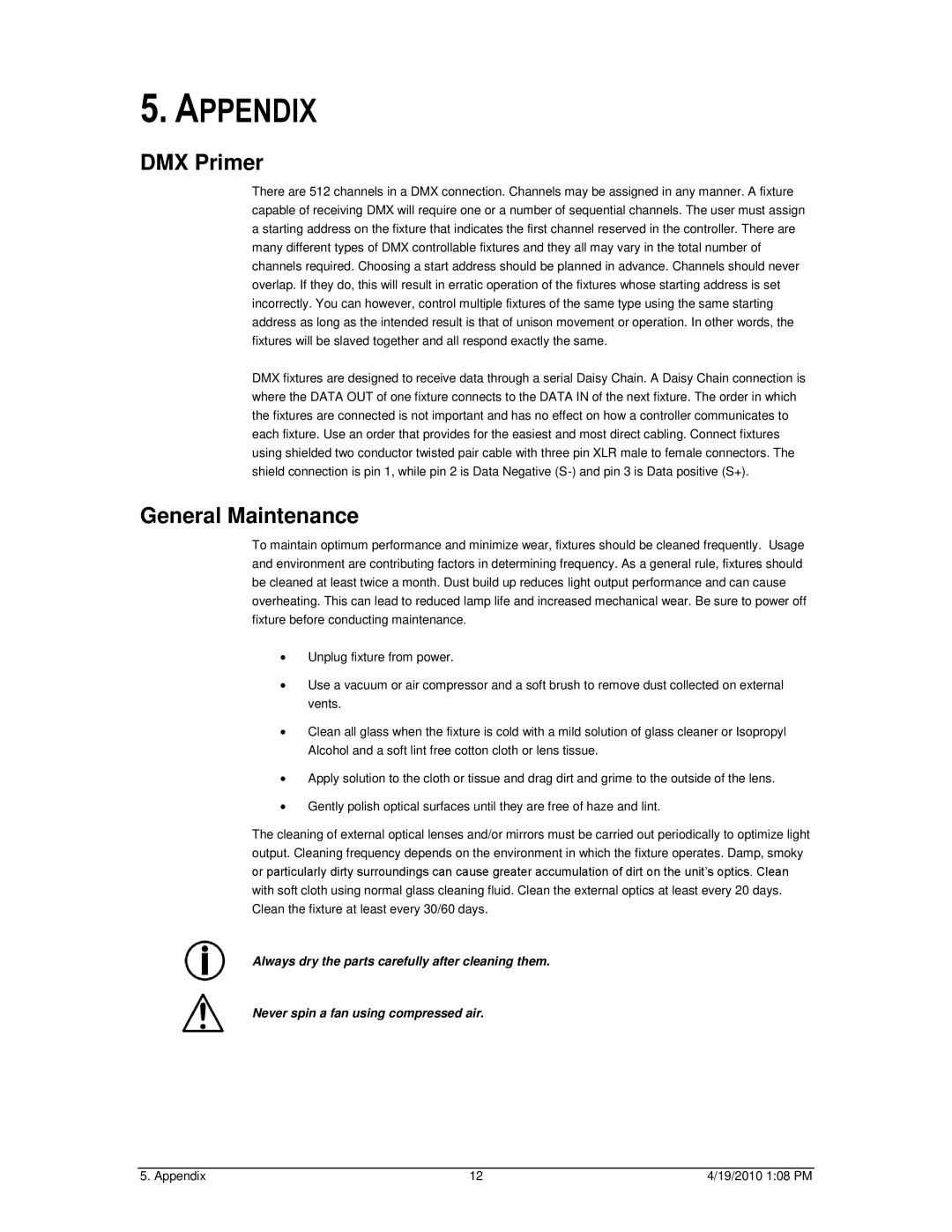56C specifications
The Chauvet 56C is an innovative and versatile LED wash light designed for professional lighting applications. This fixture is part of Chauvet’s extensive lineup, showcasing their commitment to quality, performance, and creative possibilities. The 56C is particularly distinguished by its vibrant color mixing capabilities, which make it an ideal choice for stage productions, concerts, theatrical presentations, and architectural lighting.One of the standout features of the Chauvet 56C is its extremely efficient LED technology. With a power output of 56 watts, this fixture can deliver brilliant, saturated colors while consuming minimal energy. The 56C utilizes a combination of RGBW LEDs, which means it can produce a wide spectrum of colors, including pure whites, rich reds, deep blues, and vivid greens. This color mixing capability allows lighting designers to create dynamic effects and dramatic atmospheres suitable for various applications.
The Chauvet 56C is also equipped with advanced controls, giving users flexibility in how they operate the fixture. It can be controlled via DMX, allowing for precise adjustments to intensity, color, and effects. Additionally, the fixture can run in stand-alone mode or be set to sound activation, making it easy to integrate into any lighting setup without the need for a complex control system.
Another notable feature is the built-in effects. The 56C comes with a variety of pre-programmed color sequences and chase patterns that can be easily accessed, providing lighting designers with instant visual interest. The fixture's seamless RGBW color mixing contributes to smooth fades and transitions, enhancing the overall aesthetic of any production.
Durability is another strong point of the Chauvet 56C. Constructed with high-quality materials, it is designed to withstand the rigors of regular use in diverse environments. The 56C remains cool during operation, reducing the risk of overheating and extending the life of the LEDs.
In conclusion, the Chauvet 56C is a versatile, efficient, and robust lighting solution that brings creativity and reliability to a variety of lighting scenarios. Its combination of advanced LED technology, extensive color mixing options, and user-friendly controls makes it a preferred choice for lighting professionals seeking to elevate their projects with stunning visual effects.

